- Home
- Stock Categories
- Single row bearing
- Double row bearing
- Multi-row bearing
- Full complement bearing
- Angular contact bearing
- Self-aligning bearing
- Timken Oil Seal
- Bearing housing units Timken USA
- Adapter Sleeve Timken
- Timken bearing wholesalers
- Timken Tapered Roller Bearings
- Grease
- Bearing Wholesalers
- Bearings wholesalers Philippines
- Timken bearing wholesalers
- timken housing
- Bearing Malaysia
- Bearing Distributors in Thailand
- Tapered Double Roller Bearings timken
- Timken Slewing Bearing Distributor
- Deep groove ball bearing timken
- Tapered Roller Bearings Timken
- Gear
- Full Complement Timken
- Spherical Roller Bearings Singapore
- Timken Spherical roller bearing
- Mcgill bearing
- Mud Pump Bearing
- Excavator Bearing
- Ceramic Ball Bearing
- FAG Bearing
- Bearing in Singapore
- Mud pump bearings
- Mud pump bearings
- Oilfield Equipment Bearings
- Rolling Mill Bearing
- Oilfield mud pump bearings
- Vibrating screen bearings
- Shearer bearings
- Bearings for Cement Manufacturing
- Mining machinery bearing
- heavy duty shaker screen spherical
- Crushing Equipment bearing
- Bearing wholesalers
- EJA Va405 Spherical Bearings For Vibratory Applications Cylindrical
- four-row tapered roller Bearings • tQow – 2tdiw
- Multi-Row Roller Bearings NTN
- Four Row Cylindrical Roller Bearings NTN
- SL Type Cylindrical Roller Bearings NTN
- SL Type Cylindrical Roller Bearings for Sheaves NTN
- Single Row Tapered Roller Bearings NTN
- Double Row Tapered Roller Bearings NTN
- Four Row Tapered Roller Bearings NTN
- Spherical Roller Bearings NTN
- Thrust Bearings NTN
- Bearings for special applications NTN
- DOUBLE-ROW CYLINDRICAL ROLLER BEARINGS NSK
- FULL-COMPLEMENT CYLINDRICAL ROLLER BEARINGS NSK
- SINGLE-ROW TAPERED ROLLER BEARINGS NSK
- YUKEN Piston pump
- DOUBLE-ROW TAPERED ROLLER BEARINGS NSK
- SPHERICAL ROLLER BEARINGS NSK
- SINGLE-DIRECTION THRUST BALL BEARINGS NSK
- CYLINDRICAL ROLLER THRUST BEARINGS NSK
- TAPERED ROLLER THRUST BEARINGS NSK
- SPHERICAL THRUST ROLLER BEARINGS NSK
- ROLLING BEARINGS FOR STEEL MILLS NSK
- SEALED-CLEAN FOUR-ROW TAPERED ROLLER BEARINGS NSK
- FOUR-ROW CYLINDRICAL ROLLER BEARINGS NSK
- DOUBLE-ROW TAPERED ROLLER BEARINGS NSK
- Roll Bearings for Mills NSK
- CROSSED-ROLLER BEARINGS NSK
- Ball Bearings NSK
- TAPERED ROLLER THRUST BEARINGS For Adjusting Screws NSK
- Roller Bearings NSK
- Thin Section Bearings Kaydon
- Double row double row tapered roller bearings (inch series)
- Double direction thrust tapered roller bearings
- Full complement Tapered roller Thrust bearing
- Thrust cylindrical roller bearings
- Thrust spherical roller bearings
- Sealed Four Row Tapered Roller Bearings
- Four row tapered roller bearings
- Double outer double row tapered roller bearings
- TDO double-row tapered roller bearings
- Single row tapered roller bearings inch
- Double inner double row tapered roller bearings TDI
- Single row tapered roller bearings
- Double inner double row tapered roller bearings inch
- Split spherical roller bearings
- Spherical roller bearing
- Four row cylindrical roller bearings
- Single row cylindrical roller bearings
- Full row of cylindrical roller bearings
- Double row cylindrical roller bearings
- Double row full complement cylindrical roller bearings
- Four point contact ball bearings
- Double row angular contact ball bearings
- Deep groove ball bearings
- ANGULAR CONTACT THRUST BALL BEARINGS TYPE TVL
- DTVL angular contact thrust ball bearing.
- TP thrust cylindrical roller bearing
- TPS thrust cylindrical roller bearing
- THRUST SPHERICAL ROLLER BEARINGS TYPES TSR-EJ AND TSR-EM
- TTHD THRUST TAPERED ROLLER BEARINGS
- TTHDFL thrust tapered roller bearing
- TTHDFLSA THRUST TAPERED ROLLER BEARINGS
- THRUST TAPERED ROLLER BEARINGS TYPES TTSP, TTSPS AND TTSPL
- THRUST TAPERED ROLLER BEARINGS – TYPES TTC, TTCS AND TTCL
- SCREWDOWN BEARINGS – TYPES TTHDSX/SV AND TTHDFLSX/SV
- THRUST TAPERED ROLLER BEARING TYPES TTDWK AND TTDFLK
- CROSSED ROLLER BEARINGS TXR
- Tapered Roller bearings double-row • Type TDO
- Tapered Roller bearings double-row TDI TDIT
- Tapered Roller Bearings double-row TNA
- Tapered Roller Bearings double-row TNASWE
- Tapered Roller Bearings double-row Spacer assemblies
- TTVS TTSP TTC TTCS TTCL tapered roller thrust BEARINGS
- Heavy-Duty Shaker Screen Spherical Roller Bearings
- Timken SPHERICAL ROLLER BEARINGS
- CYLINDRICAL ROLLER BEARINGS ONE-ROW METRIC ISO SERIES
- CYLINDRICAL ROLLER BEARINGS one-row STANDARD SERIES
- CYLINDRICAL ROLLER BEARINGS FULL-COMPLEMENT NCF
- CYLINDRICAL ROLLER BEARINGS TWO-ROW
- Four-Row Cylindrical Roller Bearings
- CYLINDRICAL ROLLER BEARINGS HJ SERIES
- CYLINDRICAL ROLLER BEARINGS 5200 A5200 metric series
- Heavy-duty needle roller bearings
- four-row cylindrical roller Bearing assembly
- four-row cylindrical roller Bearing inner ring Outer assembly
- four-row tapered roller Bearings • tQow – 2tdiw
- Timken Sealed roll neck Bearings
- four-row tapered roller bearings tqits
- Tnaswh two-row tapered roller bearings
- TdiT TnaT two-row tapErEd rollEr BEaringS
- tdik thrust tapered roller bearings
- TTdFlk, TTdW and TTdk bearings
- Screwdown systems thrust tapered roller bearings
- Thrust spherical roller bearing
- Mud pump bearings
- TOKYO-KEIKI piston pump
- TOKYO-KEIKI vane pump
- YUKEN vane pump
- DAIKIN piston pump
- DAIKIN vane pump
- DAIKIN Rotor pump
- VICKERS Piston pump
- Vickers vane pump
- VICKERS gear pump
- NACHI gear pump
- NACHI piston pump
- Rexroth A1VO
- Rexroth A10VSO
- Rexroth AA4VSO
- Rexroth A15VSO
- Rexroth AZPF
- parker PV piston pump
- parker PVP piston pump
- parker PAVC piston pump
- parker vane pump
- Main pump
- Bearing Agents/Distributors
- Oil Drilling Equipment Mud Pump Transmission Shaft Bearing
- Petroleum machinery bearing
- Fracking Pump Bearings
- Rotary Table bearings
- Petro drill Bearing
- Famous Brand Hydraulic Pump
- Quality Control
- Single row bearing
- Double row bearing
- Multi-row bearing

Home> Technical Articles> Characteristics, crawling and adjustability of sliding guide rail
- Product Groups
Single row bearing
(3309)Double row bearing
(4983)Multi-row bearing
(2936)Full complement bearing
(37)Angular contact bearing
(139)Self-aligning bearing
(33)Timken Oil Seal
(8949)Bearing housing units Timken USA
(294)Adapter Sleeve Timken
(3087)Timken bearing wholesalers
(189)Timken Tapered Roller Bearings
(1002)Grease
(5053)Bearing Wholesalers
(9227)Bearings wholesalers Philippines
(334)Timken bearing wholesalers
(266)timken housing
(160)Bearing Malaysia
(10552)Bearing Distributors in Thailand
(6239)Tapered Double Roller Bearings timken
(638)Timken Slewing Bearing Distributor
(7699)Deep groove ball bearing timken
(25)Tapered Roller Bearings Timken
(1000)Gear
(7744)Full Complement Timken
(37)Spherical Roller Bearings Singapore
(189)Timken Spherical roller bearing
(1134)Mcgill bearing
(2328)Mud Pump Bearing
(10015)Excavator Bearing
(3655)Ceramic Ball Bearing
(19473)FAG Bearing
(17689)Bearing in Singapore
(12986)Mud pump bearings
(4582)Mud pump bearings
(17463)Oilfield Equipment Bearings
(6444)Rolling Mill Bearing
(5289)Oilfield mud pump bearings
(7723)Vibrating screen bearings
(10102)Shearer bearings
(6631)Bearings for Cement Manufacturing
(8565)Mining machinery bearing
(8827)heavy duty shaker screen spherical
(9082)Crushing Equipment bearing
(8665)Bearing wholesalers
(6038)EJA Va405 Spherical Bearings For Vibratory Applications Cylindrical
(1451)four-row tapered roller Bearings • tQow – 2tdiw
(516)Multi-Row Roller Bearings NTN
(232)Four Row Cylindrical Roller Bearings NTN
(217)SL Type Cylindrical Roller Bearings NTN
(76)SL Type Cylindrical Roller Bearings for Sheaves NTN
(23)Single Row Tapered Roller Bearings NTN
(256)Double Row Tapered Roller Bearings NTN
(720)Four Row Tapered Roller Bearings NTN
(308)Spherical Roller Bearings NTN
(639)Thrust Bearings NTN
(279)Bearings for special applications NTN
(182)DOUBLE-ROW CYLINDRICAL ROLLER BEARINGS NSK
(297)FULL-COMPLEMENT CYLINDRICAL ROLLER BEARINGS NSK
(257)SINGLE-ROW TAPERED ROLLER BEARINGS NSK
(713)YUKEN Piston pump
(293)DOUBLE-ROW TAPERED ROLLER BEARINGS NSK
(1035)SPHERICAL ROLLER BEARINGS NSK
(538)SINGLE-DIRECTION THRUST BALL BEARINGS NSK
(99)CYLINDRICAL ROLLER THRUST BEARINGS NSK
(45)TAPERED ROLLER THRUST BEARINGS NSK
(50)SPHERICAL THRUST ROLLER BEARINGS NSK
(89)ROLLING BEARINGS FOR STEEL MILLS NSK
(526)SEALED-CLEAN FOUR-ROW TAPERED ROLLER BEARINGS NSK
(76)FOUR-ROW CYLINDRICAL ROLLER BEARINGS NSK
(187)DOUBLE-ROW TAPERED ROLLER BEARINGS NSK
(110)Roll Bearings for Mills NSK
(55)CROSSED-ROLLER BEARINGS NSK
(40)Ball Bearings NSK
(233)TAPERED ROLLER THRUST BEARINGS For Adjusting Screws NSK
(46)Roller Bearings NSK
(68)Thin Section Bearings Kaydon
(1729)Double row double row tapered roller bearings (inch series)
(371)Double direction thrust tapered roller bearings
(133)Full complement Tapered roller Thrust bearing
(36)Thrust cylindrical roller bearings
(301)Thrust spherical roller bearings
(115)Sealed Four Row Tapered Roller Bearings
(61)Four row tapered roller bearings
(647)Double outer double row tapered roller bearings
(250)TDO double-row tapered roller bearings
(368)Single row tapered roller bearings inch
(961)Double inner double row tapered roller bearings TDI
(561)Single row tapered roller bearings
(137)Double inner double row tapered roller bearings inch
(497)Split spherical roller bearings
(30)Spherical roller bearing
(459)Four row cylindrical roller bearings
(974)Single row cylindrical roller bearings
(394)Full row of cylindrical roller bearings
(150)Double row cylindrical roller bearings
(578)Double row full complement cylindrical roller bearings
(162)Four point contact ball bearings
(176)Double row angular contact ball bearings
(99)Deep groove ball bearings
(226)ANGULAR CONTACT THRUST BALL BEARINGS TYPE TVL
(27)DTVL angular contact thrust ball bearing.
(15)TP thrust cylindrical roller bearing
(74)TPS thrust cylindrical roller bearing
(40)THRUST SPHERICAL ROLLER BEARINGS TYPES TSR-EJ AND TSR-EM
(76)TTHD THRUST TAPERED ROLLER BEARINGS
(69)TTHDFL thrust tapered roller bearing
(65)TTHDFLSA THRUST TAPERED ROLLER BEARINGS
(13)THRUST TAPERED ROLLER BEARINGS TYPES TTSP, TTSPS AND TTSPL
(38)THRUST TAPERED ROLLER BEARINGS – TYPES TTC, TTCS AND TTCL
(46)SCREWDOWN BEARINGS – TYPES TTHDSX/SV AND TTHDFLSX/SV
(95)THRUST TAPERED ROLLER BEARING TYPES TTDWK AND TTDFLK
(45)CROSSED ROLLER BEARINGS TXR
(12)Tapered Roller bearings double-row • Type TDO
(831)Tapered Roller bearings double-row TDI TDIT
(294)Tapered Roller Bearings double-row TNA
(85)Tapered Roller Bearings double-row TNASWE
(26)Tapered Roller Bearings double-row Spacer assemblies
(952)TTVS TTSP TTC TTCS TTCL tapered roller thrust BEARINGS
(141)Heavy-Duty Shaker Screen Spherical Roller Bearings
(179)Timken SPHERICAL ROLLER BEARINGS
(467)CYLINDRICAL ROLLER BEARINGS ONE-ROW METRIC ISO SERIES
(197)CYLINDRICAL ROLLER BEARINGS one-row STANDARD SERIES
(80)CYLINDRICAL ROLLER BEARINGS FULL-COMPLEMENT NCF
(38)CYLINDRICAL ROLLER BEARINGS TWO-ROW
(96)Four-Row Cylindrical Roller Bearings
(164)CYLINDRICAL ROLLER BEARINGS HJ SERIES
(96)CYLINDRICAL ROLLER BEARINGS 5200 A5200 metric series
(14)Heavy-duty needle roller bearings
(21)four-row cylindrical roller Bearing assembly
(40)four-row cylindrical roller Bearing inner ring Outer assembly
(130)four-row tapered roller Bearings • tQow – 2tdiw
(516)Timken Sealed roll neck Bearings
(188)four-row tapered roller bearings tqits
(43)Tnaswh two-row tapered roller bearings
(17)TdiT TnaT two-row tapErEd rollEr BEaringS
(69)tdik thrust tapered roller bearings
(78)TTdFlk, TTdW and TTdk bearings
(45)Screwdown systems thrust tapered roller bearings
(95)Thrust spherical roller bearing
(67)Mud pump bearings
(625)TOKYO-KEIKI piston pump
(219)TOKYO-KEIKI vane pump
(641)YUKEN vane pump
(337)DAIKIN piston pump
(601)DAIKIN vane pump
(108)DAIKIN Rotor pump
(151)VICKERS Piston pump
(586)Vickers vane pump
(79)VICKERS gear pump
(25)NACHI gear pump
(101)NACHI piston pump
(339)Rexroth A1VO
(20)Rexroth A10VSO
(236)Rexroth AA4VSO
(41)Rexroth A15VSO
(22)Rexroth AZPF
(51)parker PV piston pump
(2691)parker PVP piston pump
(121)parker PAVC piston pump
(344)parker vane pump
(37)Main pump
(1266)Bearing Agents/Distributors
(9)Oil Drilling Equipment Mud Pump Transmission Shaft Bearing
(100)Petroleum machinery bearing
(100)Fracking Pump Bearings
(150)Rotary Table bearings
(150)Petro drill Bearing
(201)Famous Brand Hydraulic Pump
(12)
- Address258 Bearing Wholesalers Center Hill, Singapore 628925
- Factory Address258 Bearing Wholesalers Center Hill, Singapore 628925
- Worktime9: 00-18: 00 (بتوقيت بكين)
- Phone(Working Time)+6531591338
- Phone(Nonworking Time)+6531591338
- Fax+6531591338
Guideway is an important part of machine tool. It plays the role of supporting and guiding moving components moving along a certain track. The development of traditional guide rail is first manifested in sliding components and guide ways. In various kinds of guideways, sliding guides are widely used in CNC machine tools due to their advantages such as simple structure, convenient manufacture, good rigidity and high vibration resistance.
1. Characteristics of sliding guide rail
Sliding rail is characterized by the use of media between the guide and sliding parts, including solid friction materials, oil and air, etc.
The most common anti friction guide is a solid friction material, such as polyvinyl chloride or bronze mixed material, which is installed on the mobile assembly to reduce the friction of the guide rail. Anti friction materials shall be designed with oil grooves to meet the need for lubrication or other forms of lubrication between mobile components and guide surfaces.
The most widely used hydraulic medium is the hydrostatic guideway. Under pressure, hydraulic oil enters the grooves of the sliding assembly, and an oil film is formed between the guide rail and the sliding component to separate the guide rail from the mobile component, thereby greatly reducing the friction force of the mobile component and thereby lubricating. Hydrostatic guideway has good effect on lubrication of heavy load movement, and it also has certain compensation function for eccentric load. For example, when a machining machine is working on a large sand box, the sand box just moves to the end of the machine stroke. At this time, the hydrostatic guide rail can increase the oil pressure, so that the guide rail still keeps the state of horizontal load accurately. Some horizontal boring and milling machines also use this technology to compensate for spindle speed drop during deep hole machining.
Another way of using oil as a medium is the dynamic pressure guideway. The difference between it and the hydrostatic guideway is that it does not use pressure, but uses the viscosity of the oil to avoid direct contact between the moving component and the guide. The advantage is that the hydraulic pump can be saved.
Air is also a common medium between sliding guide and sliding assembly. It is also divided into two forms, pneumatic hydrostatic guideway and pneumatic dynamic guideway. Its working principle is similar to that of hydrostatic guideway and dynamic pressure rail in hydraulic guide.
2. The emergence of crawling phenomena.
Due to the relatively large contact area between the planar guide and the moving components, the mobile components need to overcome the inertia of the mobile components for rapid micro feed. When the ball screw or other driving forces push the mobile components to move, a slight adhesion resistance will occur. When the mobile component starts to move, it will be slightly beat at any time because it is in the state of being caught, leading to the crawling phenomenon. The crawling phenomenon has little effect on the large movement, but it will cause a greater impact on the micro movement, and become a problem.
3. Adjustability of slide rail
Tunability is a unique advantage of linear slide guide. According to the use of the guide rail, the linear sliding guide system will be equipped with adjustable edges, with one or more quantities. As the mobile components move along the side of the linear guide rail, it is necessary to ensure the tight contact between the mobile component and the side of the guide rail, so the guide rail must have adjustable function.
The most common adjustment method is to place the diagonal iron between the moving parts and the opposite side of the guide rail contact surface. The shape of the skew iron is conical strip iron. If the sliding part or guide rail is worn and the gap between the contact surfaces is generated, the guide rail can be accurately compensated by adjusting the inclined iron to eliminate the clearance between the moving parts and the guide rail.
The machine tool manufactory has developed the patented technology of automatic adjustment of slant iron and has been widely adopted. The basic principle of this technology is to make the diagonal iron maintain a fixed spring pressure. Once the moving parts or guide rail system is worn, the inclined iron can automatically eliminate the gap between the two.
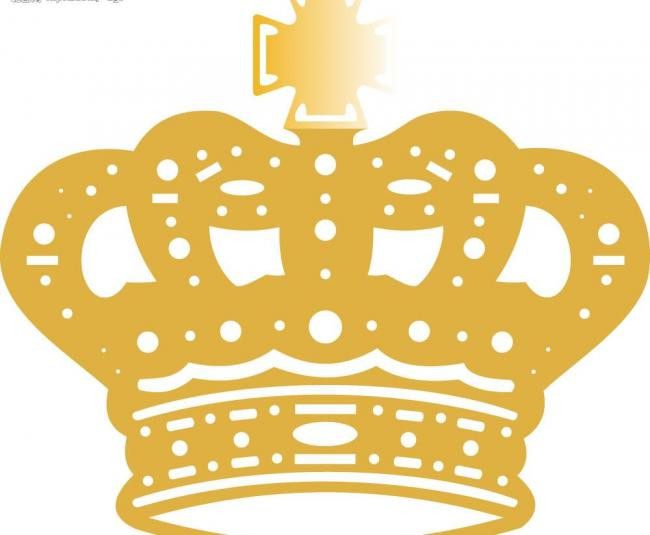
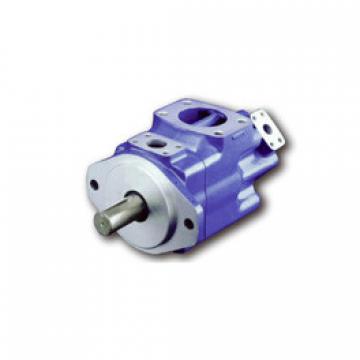 Best-selling Eaton-Vickers Vane Pumps
Best-selling Eaton-Vickers Vane Pumps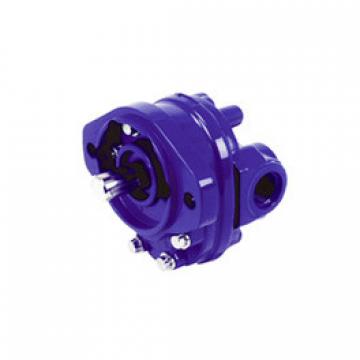 Best-selling Eaton-Vickers Aluminum Gear Pumps
Best-selling Eaton-Vickers Aluminum Gear Pumps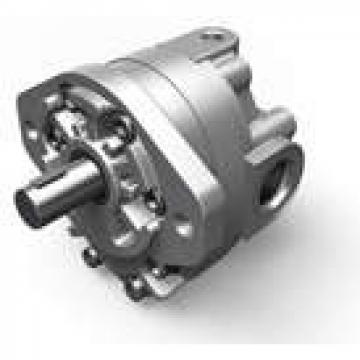 Best- selling Parker’s GEAR PUMPS
Best- selling Parker’s GEAR PUMPS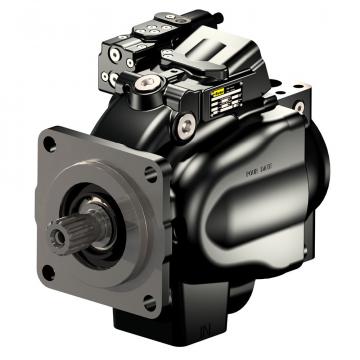 Best-selling Parker piston pumps
Best-selling Parker piston pumps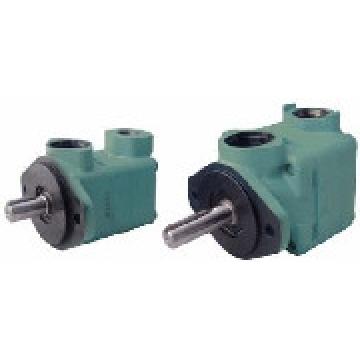 Best-selling Japanese Daikin Pumps
Best-selling Japanese Daikin Pumps